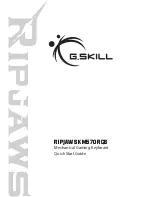
Selecting and Playing Styles
50
• • • • • • • • • • • • • • • • • • • • • • Writing Chord Names • • • • • • • • • • • • • • • • • • • • • • •
Knowing how to read and write chord names is an easy yet invaluable skill. Chords are often writ-
ten in a kind of shorthand that makes them instantly recognizable (and gives you the freedom to
play them with the voicing or inversion that you prefer). Once you understand the basic principles
of harmony and chords, it’s very simple to use this shorthand to write out the chords of a song.
First, write the root note of the chord in an uppercase letter. If you need to specify sharp or flat,
indicate that to the right of the root. The chord type should be indicated to the right as well. Exam-
ples for the key of C are shown below.
One important point:
Chords are made up of notes “stacked” on top of each other, and the stacked
notes are indicated in the chord name of the chord type as a number — the number being the dis-
tance of the note from the root. (See the keyboard diagram below.) For example, the minor 6th
chord includes the 6th note of the scale, the major 7th chord has the 7th note of the scale, etc.
The Intervals of the Scale
To better understand the intervals and the numbers
used to represent them in the chord name, study this
diagram of the C major scale:
Other Chords
Major chord
C
Minor chord
C
m
Augmented chord
C
aug
Diminished chord
C
dim
For simple major chords, the type is omitted.
C D E F G A B C D E F
Root
2nd
4th
3rd
5th
7th
6th
Octave
11th
9th
Dominant 7th (flatted 7th)
C
sus4
5th
4th
C
7
Dominant
7th
Major chord
C
m7
Dominant
7th
Minor chord
C
M7
7th
Major chord
C
m7
b
5
Dominant
7th
Diminished
chord
C
m6
Minor
chord
6th
C
(9)
9th
48
















































